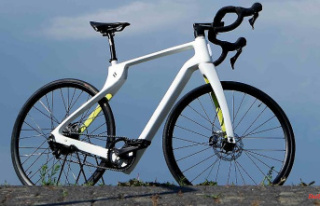In Germany, the compact class is dominated by German manufacturers. Other providers have a hard time. With the second-generation Ceed, Kia focused on looks and workmanship. Is that enough?
The second generation of the Kia Ceed (JD) was launched between 2012 and 2018. It caught up with the established German competitors both visually and technically. However, the TÜV still sees potential for optimization.
body and interior
Even the first generation of the Ceed made a name for itself with its beautiful play of shapes. In the second, the design team led by Peter Schreyer went one better, so that the compact was one of the most stylish in its class.
The Ceed was offered in three body styles. Most of the orders fell on the five-door. The shape of the 4.31 meter long vehicle developed in Europe was based on the bestseller VW Golf, with plenty of space on all seats and a flexible trunk making it a practical family car. The three-door Pro Ceed had almost the same dimensions, only the slightly sloping roof height was 4 centimeters lower at 1.43 meters for a coupé-like impression.
When it comes to trunk volume, the two versions differ little: Kia reports between 380 and 1318 liters and 380 and 1225 liters. Those who need more space and luggage volume will find what they are looking for in the Sportswagon (SW) station wagon. The 4.51 meter long load donkey offers 528 liters or 1642 liters of loading volume. The cockpit was pleasing and ergonomically designed in all variants. Here, too, one notices that the Golf was chosen by the Koreans as a reference size. In the higher equipment lines, the Ceed does not have to hide behind the Wolfsburg class leader in terms of material selection either.
engines and propulsion
At the market launch, the Ceed had two petrol and two diesel engines. The entry-level Otto was the 1.4-liter naturally aspirated engine with 73 kW/99 hp, which only appeals to patient drivers. With an average consumption of 6 liters, it is on par with the 1.6 liter with 99 kW/135 hp. The one-liter three-cylinder engines that have been available since 2015 are livelier and more economical. The turbos were offered with 74 kW/100 hp and 88 kW/122 hp and have an average consumption of 4.9 liters. The top engine was the 1.6 liter with 150 kW/204 hp, which has been available since 2013 and was sold as a GT and positioned against the Golf GTI. The turbo accelerates from 0 to 100 km/h in 7.6 seconds and has a top speed of 230 km/h. At least 7.4 liters flow through the lines according to the standard.
The basic diesel was a 1.4 with 66 kW/90 hp until 2013, the 1.6 liter variant with 94 kW/128 hp or the 100 kW/136 hp with 280 Nm (since 2015) offers a little more torque (260 Nm). . The 136 hp engine has an average consumption of 3.6 liters.
All models are shifted by hand as standard, the basic petrol and diesel make do with a five-speed gearbox. A six-speed automatic transmission or a seven-speed dual-clutch transmission was available for the more powerful engines.
equipment and security
Kia offered seven trim levels for the Ceed, but three of them (GT Cup, GT Track and GT Challenge) were reserved for the GT. The base level "Attract" for five-door and station wagon does without air conditioning, among other things. The compact was properly equipped in the next higher level "Edition 7", which was also available for the three-door model. If you want a well-equipped model, you should therefore go for the higher lines such as "Edition 7" or "Spirit". The latter had almost everything on board that the price list gave, including a panoramic glass sunroof or partial leather seats. The standard safety equipment was decent, but the range of options for modern assistants was somewhat patchy. The Ceed achieved a five-star rating in the NCAP crash test.
quality
Unfortunately, there are a few weak points under the Ceed's chic shell, which the TÜV inspectors complain about during the regular main inspections (HU). When checking the chassis, the axle suspension was noticed negatively. The light test reveals the dark side of the Ceed. Defective headlights and taillights as well as misaligned low beam are often found in the defect report. Even with the brakes, the compact cannot convince. Foot and parking brakes are criticized, and the brake discs wear out quickly.
Conclusion: The Kia Ceed of the second generation was visually one of the most attractive offers in the compact class, but it cannot shine at the TÜV. After all: Kia granted and grants a 7-year warranty on its vehicles. This is still valid for the later Ceed models of the second generation - even if the owner changes. Interested parties have to invest at least around 6000 euros in an old Ceed copy, around twice as much for a GT model.












